Latest News
Feature Story: Mayflower Captains, 400 Years Apart
Whether human, or human-designed Artificial Intelligence, each represents a response to an era’s big challenge. By Diane Cardwell His ship leaked and was nearing the end of its useful life. He...
Whether human, or human-designed Artificial Intelligence, each represents a response to an era’s big challenge.
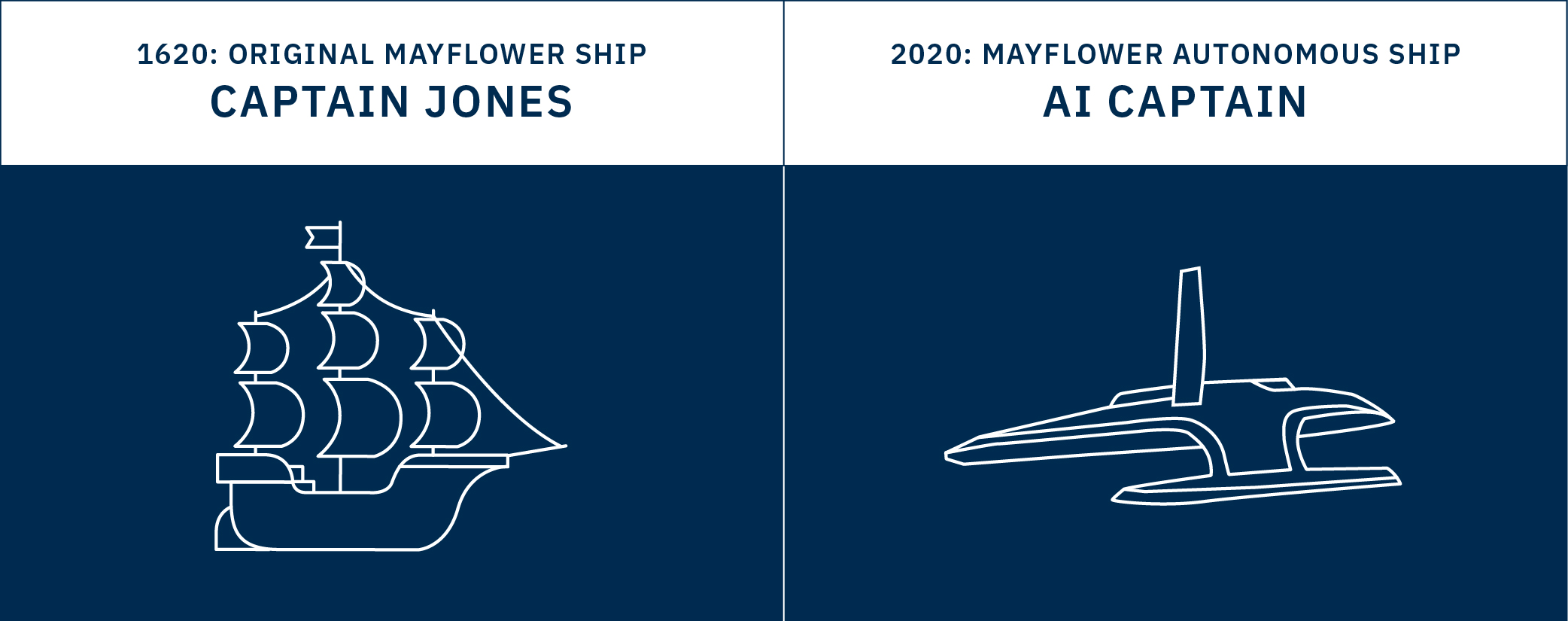
By Diane Cardwell
His ship leaked and was nearing the end of its useful life. He had but a few crude instruments to suggest, without much certainty, where he might be. And, with only wind and his sails to propel the craft, he had no way to fight through the howling storms of the North Atlantic.
The voyage, which should have taken two to three weeks, ultimately took more than two months. It’s a marvel that in 1620 Christopher Jones, captain of the Mayflower, got the Pilgrims to the New World at all.
Nautical technology, of course, has vastly improved since Capt. Jones piloted his ship and its 102 passengers, about 30 crew and their supplies, through the tricky waters leading from Plymouth, England to venture across the Atlantic. But, 400 years later, on September 16, 2020, it is taking another leap forward.
A new, fully autonomous Mayflower, built for the 21st Century, will be launched for sea trials from Plymouth, England, this time with a captain powered by cloud-based artificial intelligence—the AI Captain. The vessel’s mission, set for Spring 2021: To make the same trip to Plymouth, Mass., with no humans aboard.
The Autonomous Mayflower is a venture of the marine research organization ProMare, IBM and a consortium of global partners. The mission will be supported by a team of shipbuilders, submarine designers, software engineers, AI experts, oceanographers and university researchers stationed on land around the world.
Epic Quests
The original Mayflower voyage, based on a quest to break the restraints of European social systems, eventually led to a new form of democratic community. The autonomous Mayflower’s mission is likewise a pioneering attempt to tackle some of the biggest challenges of the day—in this case climate change and the flagging health of the world’s oceans. But it also provides a big opportunity: to demonstrate the viability of autonomous transportation.
The self-guided ship will create new opportunities for long-range marine research. It might also lead to a new era of transoceanic shipping, in which autonomous vessels, powered mainly by renewable energy, can reduce the cost and human risks and environmental hazards of seaborne global trade.
Sailing 400 years apart, the Mayflower captains—one human, the other the product of human ingenuity—are as vastly different as the vessels themselves. And yet, both voyages represent the shared ambition of people through the ages to continually seek a brighter future.
Here’s a look at the key differences and crucial similarities between Capt. Jones, the Mayflower’s AI Captain and the ships under their command:
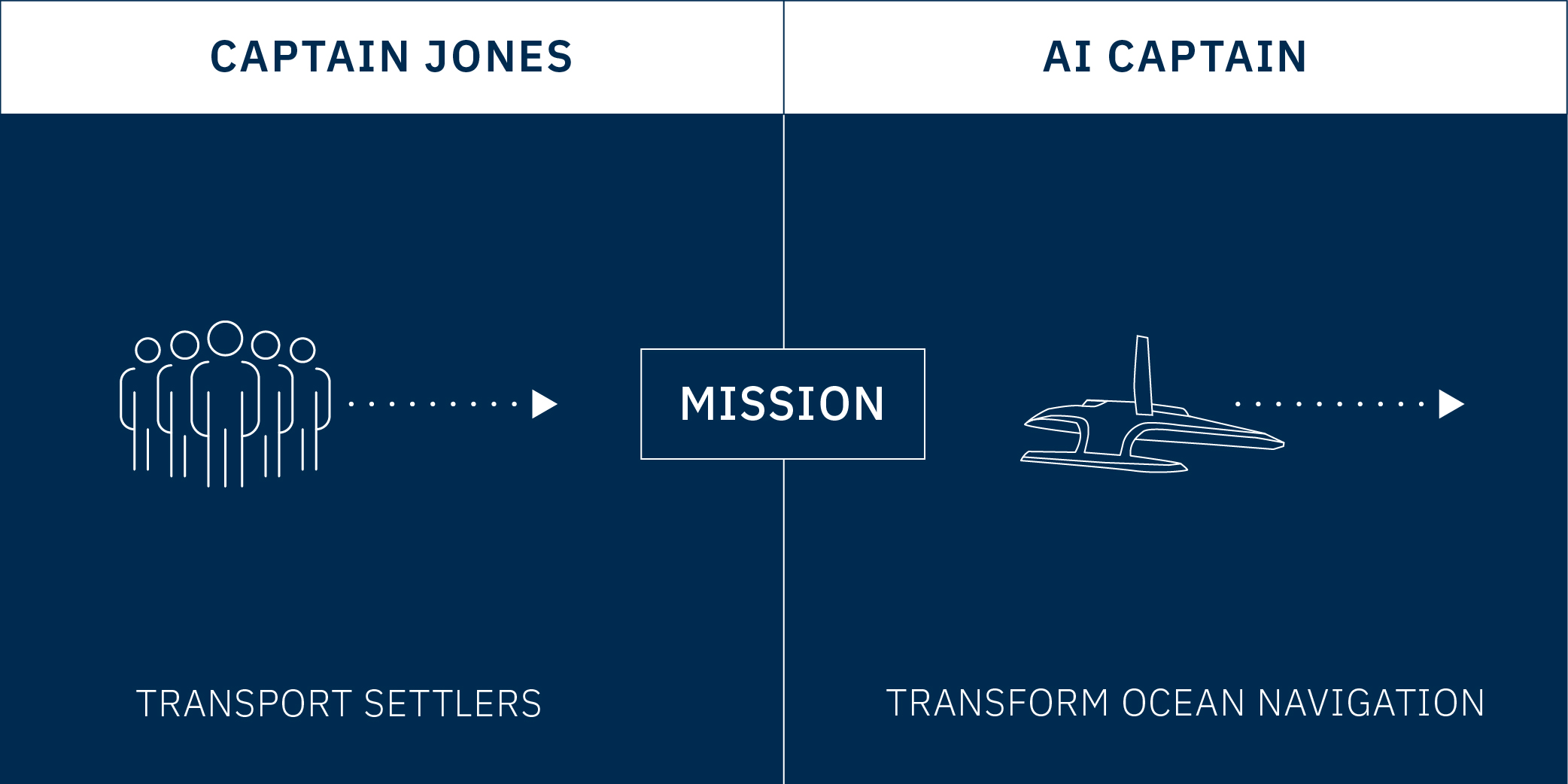
Capt. Jones: Safely transport about 100 settlers, many seeking religious freedom and economic opportunity, to land near the mouth of the Hudson River, then part of the Virginia Colony. (He missed by more than 200 miles.)
AI Captain: Prove the viability of a fully autonomous voyage from Plymouth, England to Plymouth, Mass., with no people aboard. Put latest AI and edge-computing technologies to test in an extreme environment. Collect data to help advance understanding of the health of oceans and marine life.

Capt. Jones: Descended from seafaring families. Born and raised in Harwich, a vital port town in Essex, England. Successful shipper appointed to Harwich leadership post by King James I.
AI Captain: Conceived and designed by software engineers based in Europe and North America. Descended from two of the world’s most powerful AI supercomputers, the U.S. Department of Energy’s Summit and Sierra systems. Incorporates computer-vision technology typically used in industrial applications.
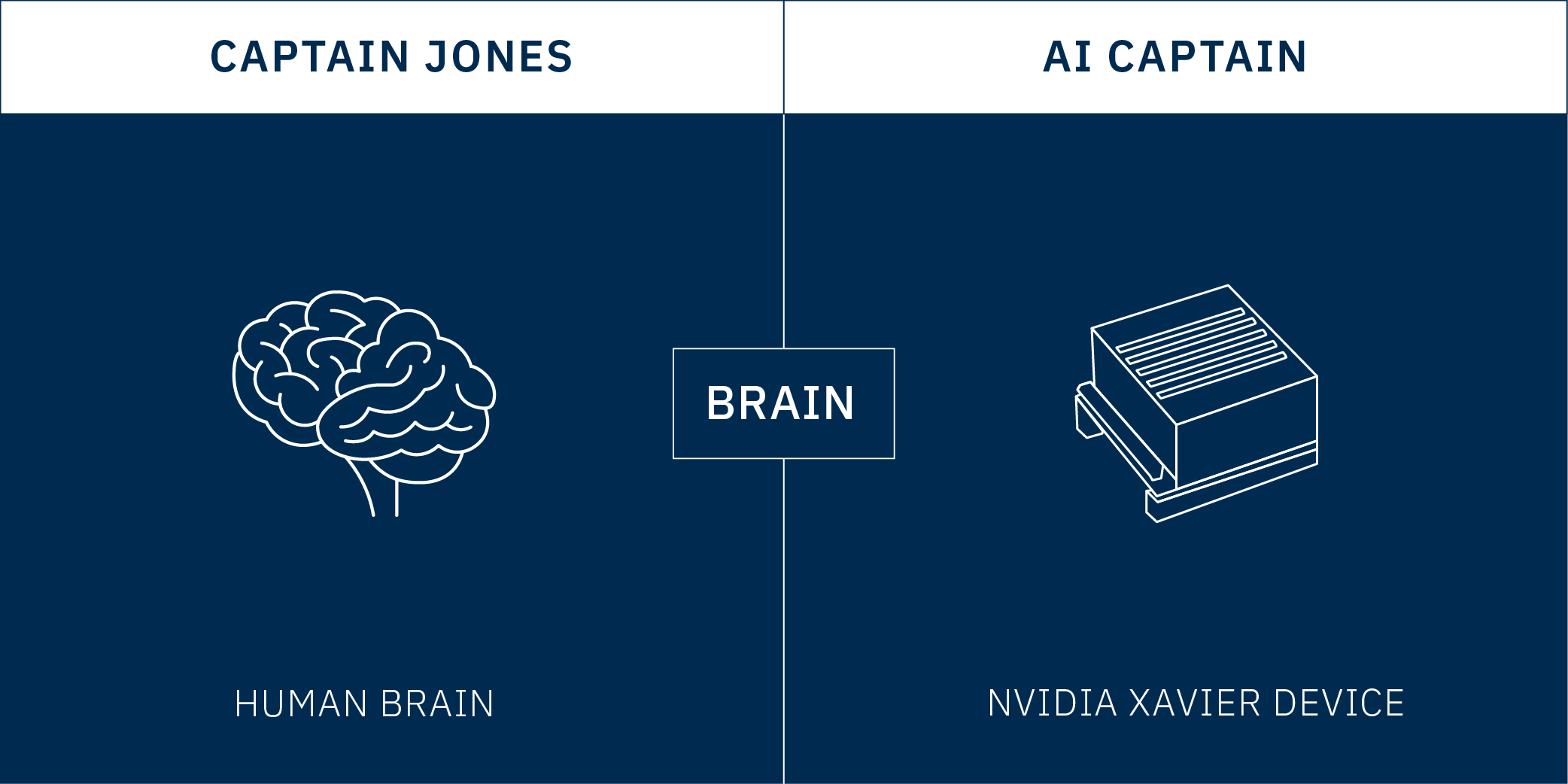
Capt. Jones: Standard-issue Homo Sapien, augmented by on-the-job learning.
AI Captain: Runs on IBM’s edge computing systems which synch with the IBM Cloud when connectivity is available, but are powered locally by several onboard NVIDIA Jetson AGX Xavier edge devices. Red Hat Enterprise Linux operating system. Augmented by machine learning.
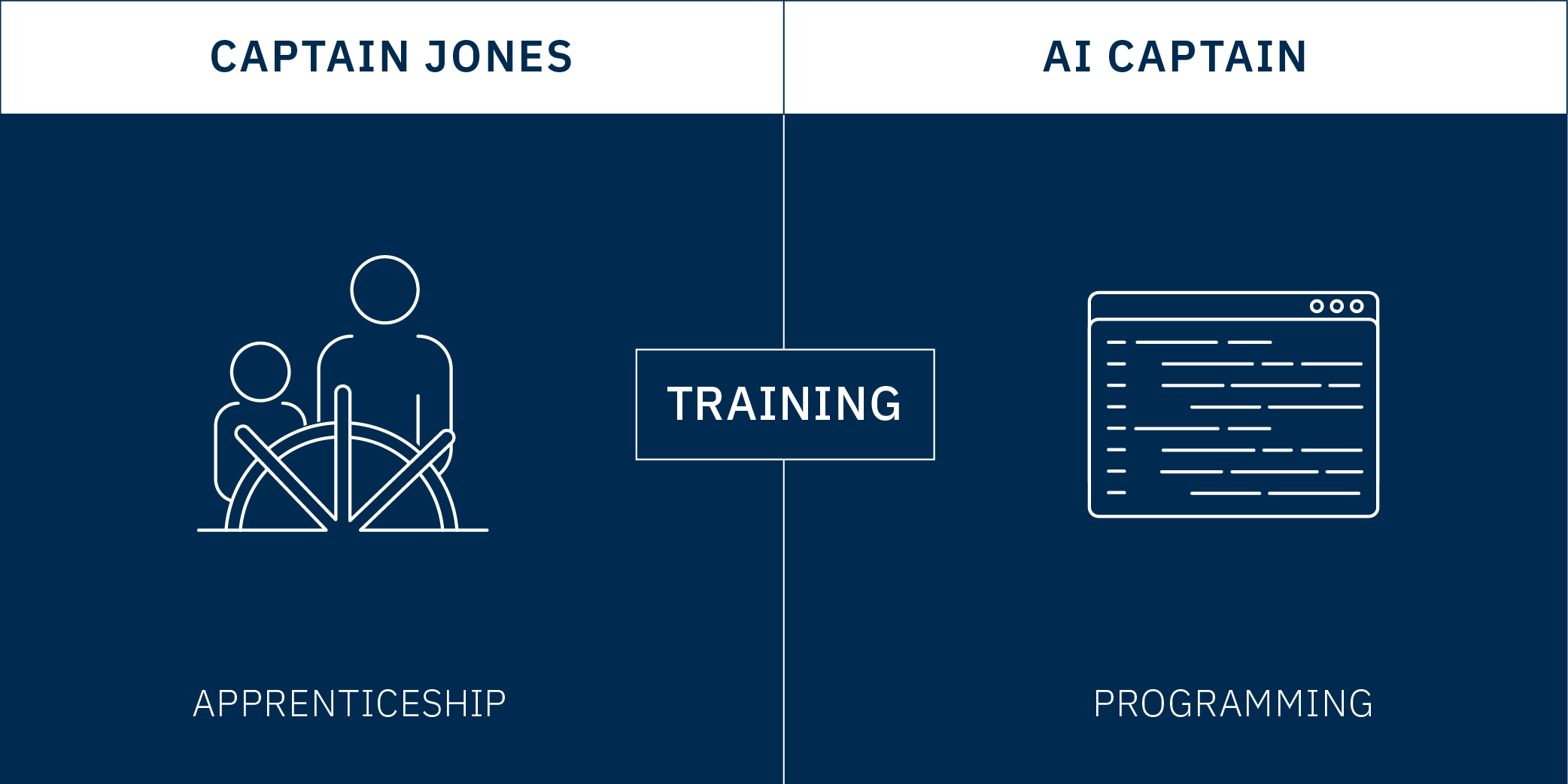
Capt. Jones: Apprenticed as a child, inherited ownership stake in ships starting at age 18. Before ferrying Pilgrims, sailed Mayflower around Europe mainly trading English woolens for French wines and occasional cargo of Norwegian herring.
AI Captain: Two years of machine learning on IBM Power Systems AC922 server with IBM POWER9 CPUs and NVIDIA V100 Tensor Core GPUs. Trained with 1 million nautical images and programmed to heed official global-collision regulations and safety conventions.
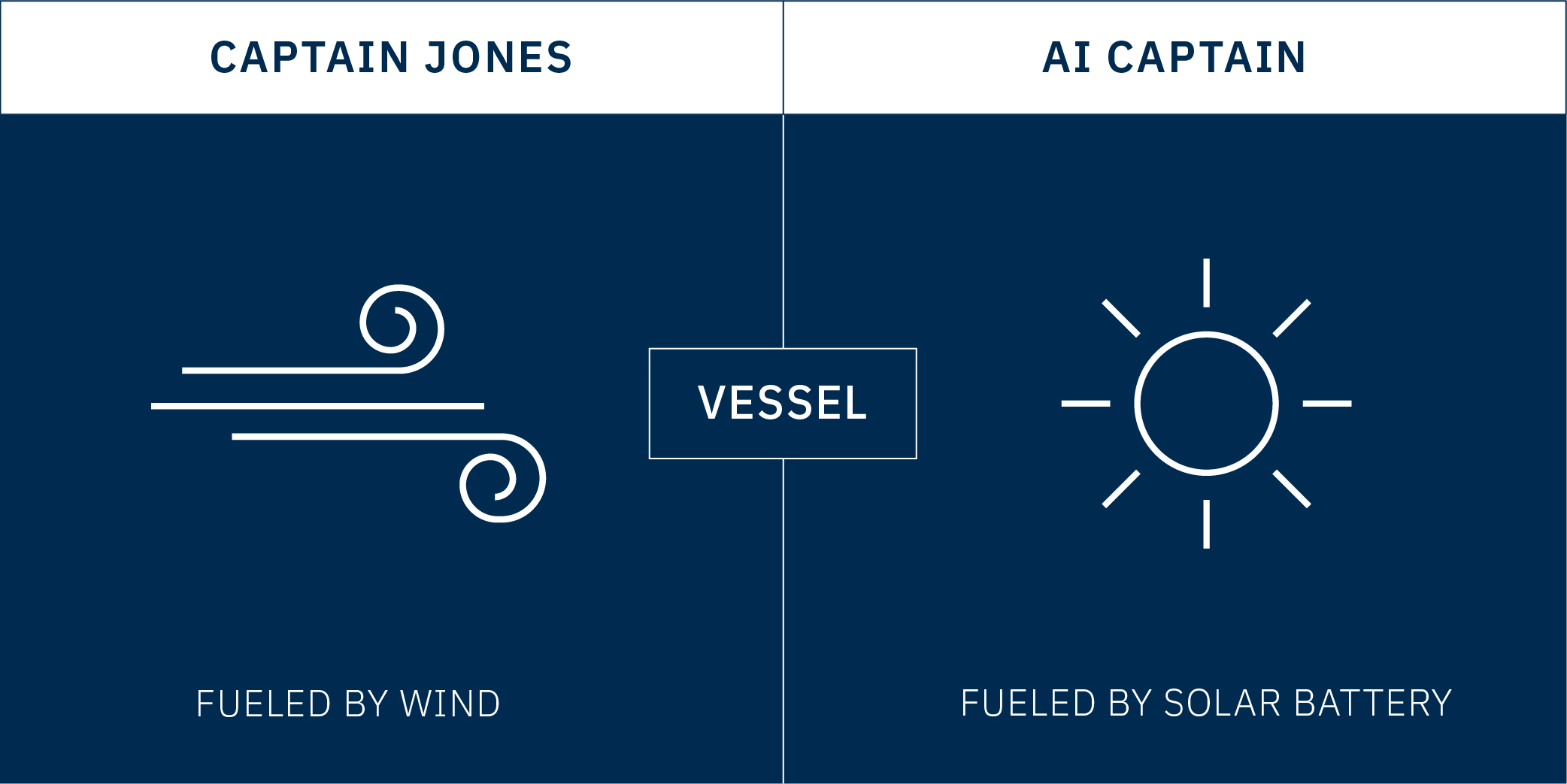
Capt. Jones: Triple-mast with single hull. Wood with canvas sails, enclosed holds, open decks. 100 feet long. Max speed of about 3 knots. Fueled by wind.
AI Captain: Triple-hull with single, central tower to keep radar, cameras and GPS antennas above water. Enclosed aluminum composite body. 49 feet long. Max speed of about 10 knots. Fueled by solar-fed battery, could advance efficiency and sustainability of ocean transport. Diesel-generator back-up power, if needed.
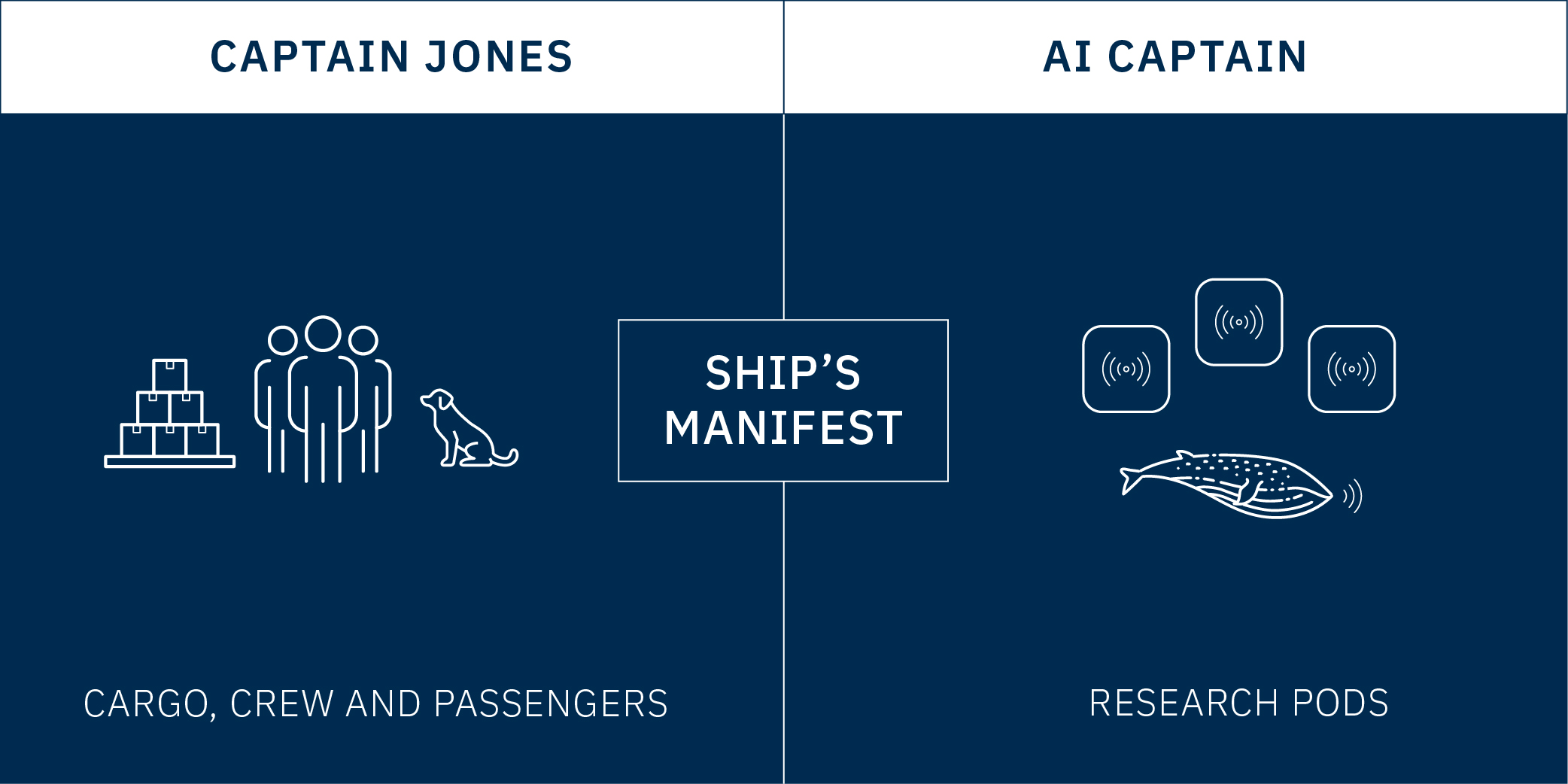
Capt. Jones: Puritan separatists fleeing religious persecution, social unrest and tumbling economy; so-called Strangers including craftsmen and disinherited children. Personal belongings, food, beer, fresh water, two dogs.
AI Captain: Research pods with equipment to sample water for microplastics, detect and study whale and dolphin sounds, map sea levels. Names of 150 citizens of Plymouth, England, and other cities around the world who donated more than £100,000 for the project through a crowd-funding initiative.
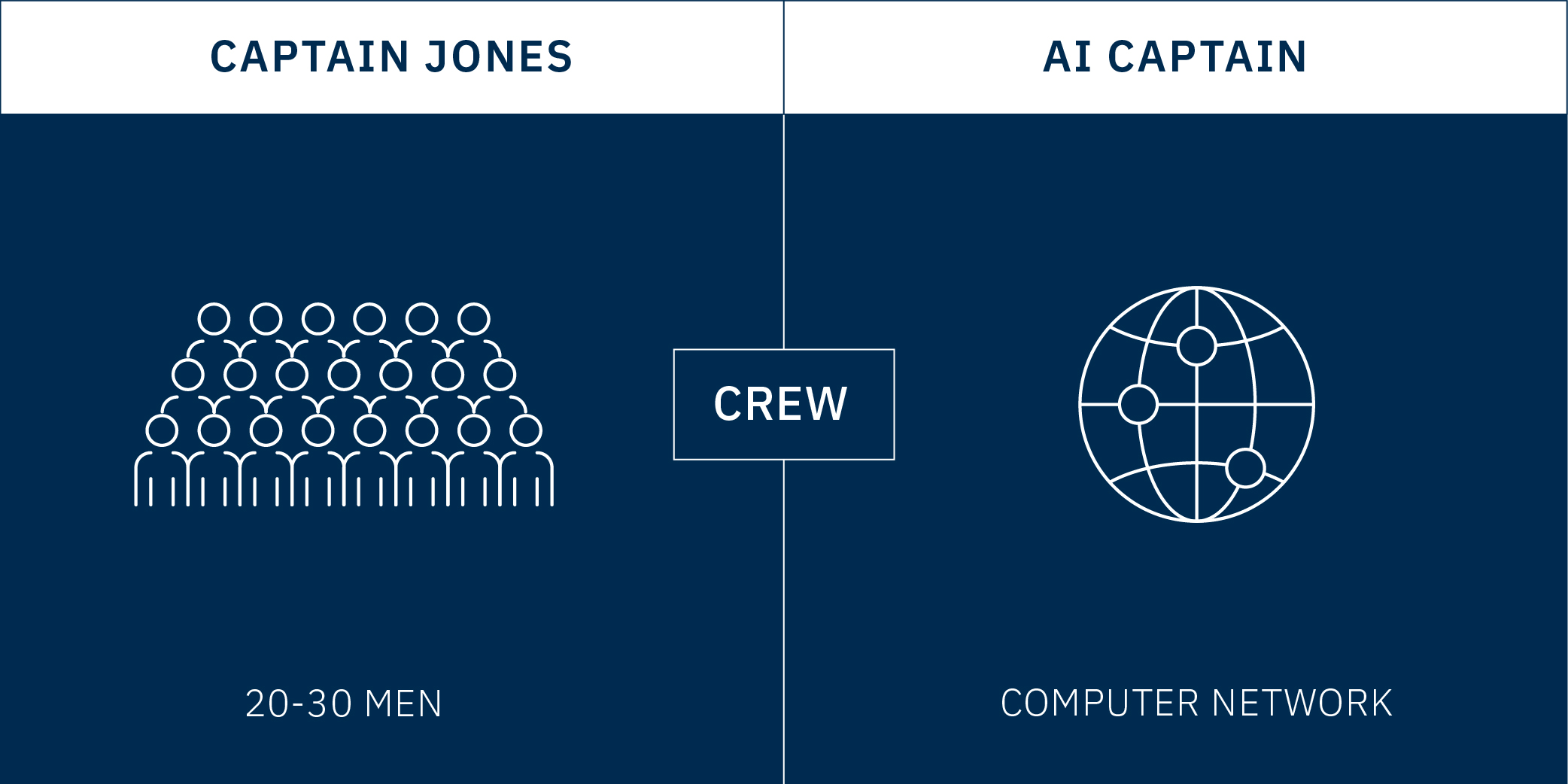
Capt. Jones: About 20 to 30 men. Included mate recently freed from Spanish prison who’d sailed with pirates and, unlike Jones, had experience on the Atlantic.
AI Captain: On-board computer network, including virtual helmsman to turn ship, and virtual doctor to bypass or repair ailing systems—usually through a reboot.

Capt. Jones: Set course and speed, directed crew face-to-face. Managed supplies and rations. Enforced discipline among crew and passengers. Promoted hygiene (to extent possible).
AI Captain: Set course and speed; direct virtual crew through onboard network. Communicate with other vessels and entities through satellite and using IBM edge computing solutions to make decisions on the open ocean even when unable to send data back to shore for processing.
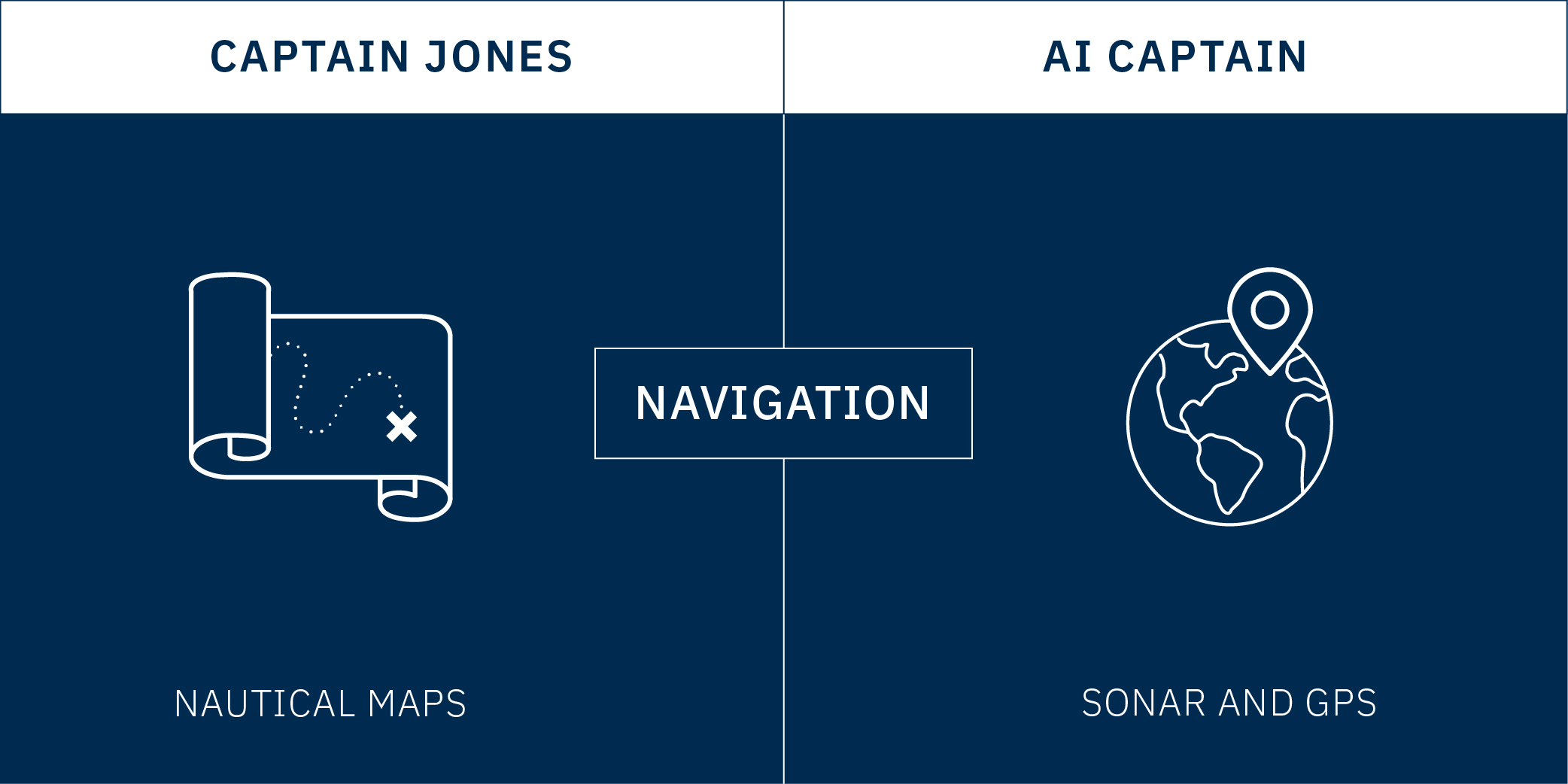
Capt. Jones: Eyes and ears of all onboard. Nautical charts refined over decades of English exploration. Compass, hourglass, telescope, cross-staff and/or astrolabe, stars and the sun. Knotted-rope log line to compute speed and distance traveled; weighted rope to determine water depth.
AI Captain: Uses IBM PowerAI Vision and Jetson-powered edge computing systems to safely navigate around ships, buoys and other ocean hazards it might meet. Sonar depth-finder, sea-state sensors, electronic nautical charts, GPS, cameras, lidar, radar, meteorological models from The Weather Company. Could significantly reduce accidents at sea by eliminating human error.
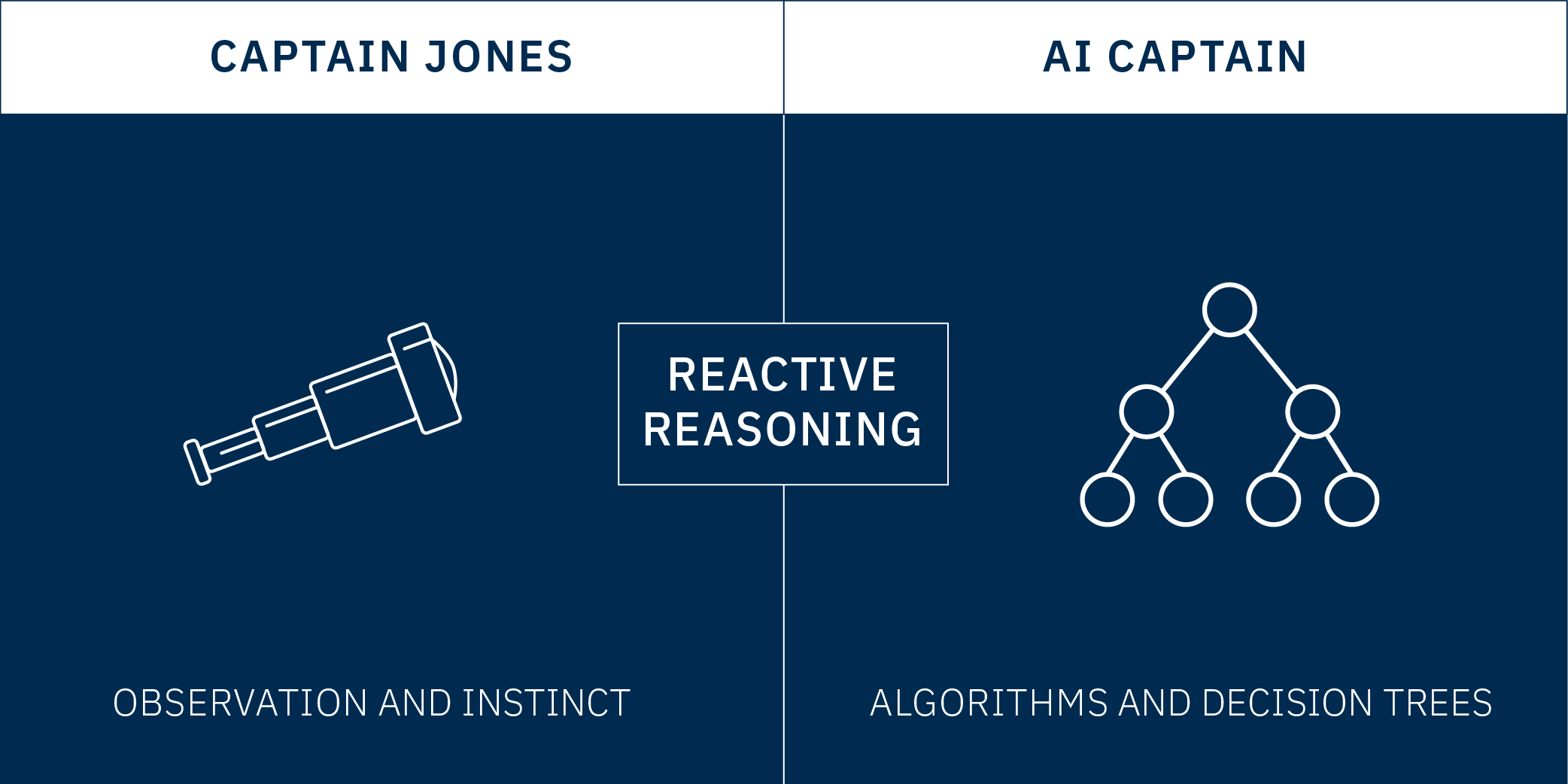
Capt. Jones: Monitored environmental and ship activity, often from poop deck, the high observatory atop captain’s quarters at ship’s rear. Culled information from passengers and crew. Trusted gut instinct from past experience that included at least one near mutiny, being blown off-course.
AI Captain: IBM Operational Decision Manager adapted for marine use. Complex algorithms and decision trees weigh regulations and protocols against current and predicted weather and sea state, vessel operating status, obstacles and hazards. Determines best course of action to avoid collision or harm to vessel and other mariners. Assimilates outcomes and continually learns, to guide future decisions.
See more on the Mayflower Autonomous Ship Project.
https://newsroom.ibm.com/then-and-now